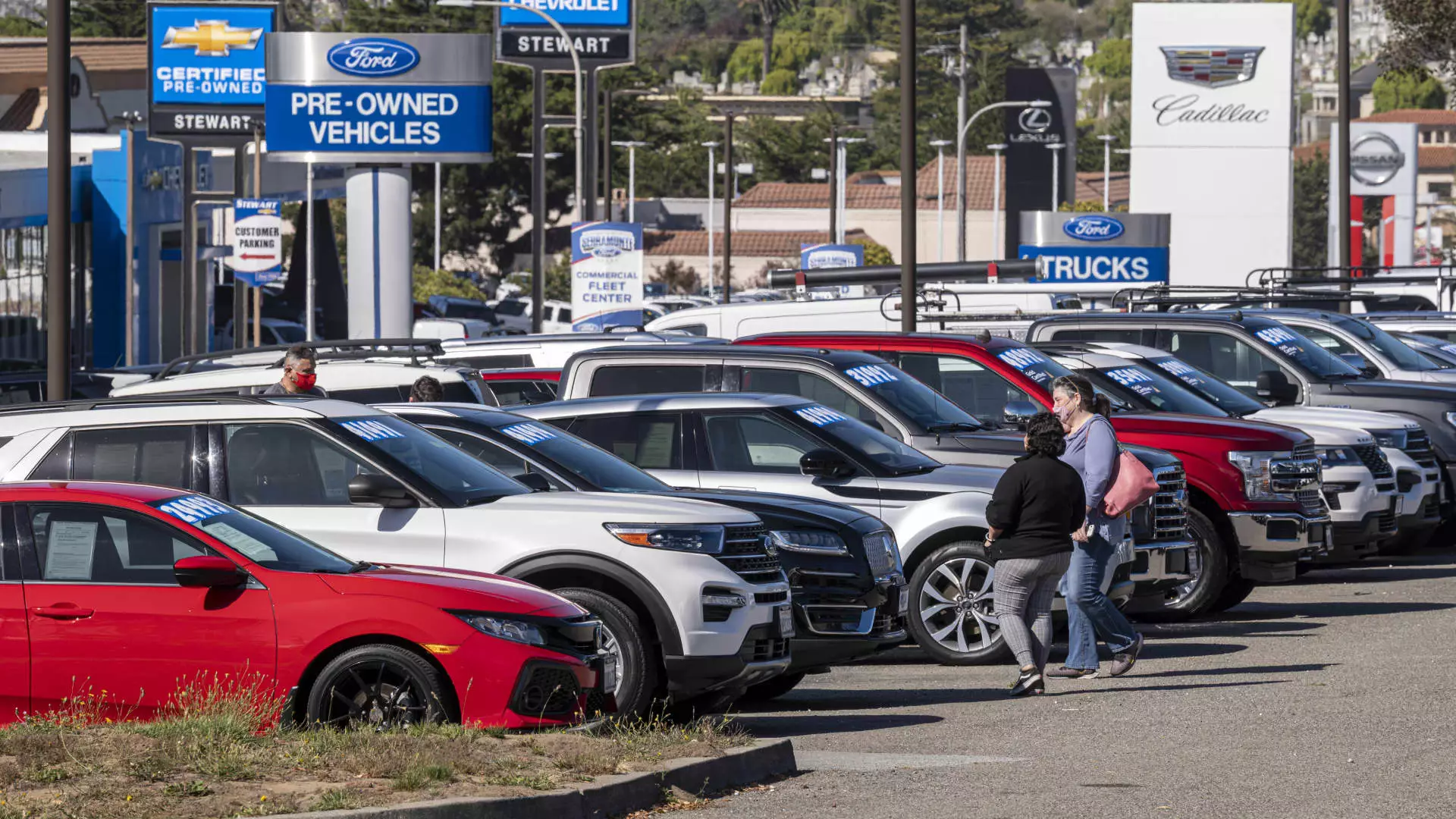In recent years, car payments have seen a significant surge due to a combination of factors such as high vehicle prices and soaring interest rates. According to data from Moody’s Analytics, the average monthly car payment for customers reached $760 in May. This figure represents a 40% increase from the $535 average payment back in May 2019. Even though there has been a slight decline from the peak of $795 seen in December 2022, car owners are still facing hefty financial obligations.
The Reality of Negative Equity
One of the major challenges that many car owners are currently facing is negative equity, where the amount owed on a vehicle surpasses its actual worth. This issue has become increasingly common, with a record number of customers finding themselves “underwater” on their auto loans. The pandemic-induced spike in car prices has left car owners with negative equity averaging over $6,000, as reported by Edmunds. Such a situation can result in a cycle of perpetual debt, as car owners roll over the negative balance into their new auto loans, leading to higher payments with extended periods and increased interest rates.
The Impact of Depreciation
The sharp decline in used car prices following the pandemic has led to higher rates of depreciation for many vehicles. While it is not uncommon for trade-ins to carry some negative equity, the severity of the current situation is alarming. Ivan Drury, a Senior Director of Insights at Edmunds, highlights the concern over the amount of negative equity being accumulated. Trading in a vehicle with negative equity can perpetuate the financial burden on consumers, making it challenging to break free from the cycle of debt.
Despite the escalating cost of car ownership, there is a glimmer of hope for car shoppers in the form of increased incentives. Moody’s reports an 81% rise in incentives over the past year, offering relief to some extent. These incentives can range from cash discounts and interest rate subventions to trade-in allowances. However, the timing of potential interest rate reductions by the Federal Reserve remains uncertain, with a lag time of approximately six months before any impact on auto loan rates. Inflation further compounds the issue by driving up vehicle sticker prices, offsetting any potential savings from reduced interest rates.
While there may be temporary relief in the form of incentives, the long-term outlook for car payments remains bleak. Structural changes in the auto market are expected to sustain high prices and payments for years to come, posing a continued financial challenge for car owners. The persistence of negative equity, coupled with inflation and interest rate uncertainties, paints a grim picture for individuals looking to navigate the complex landscape of auto loans.
The rising cost of car payments presents a formidable financial hurdle for many consumers, with negative equity and high depreciation rates exacerbating the situation. While incentives offer some respite, the overarching trends in the auto market suggest that car owners may continue to face steep payments in the foreseeable future. It is essential for individuals to carefully assess their financial situations and explore alternative solutions to mitigate the burden of escalating car payments.

